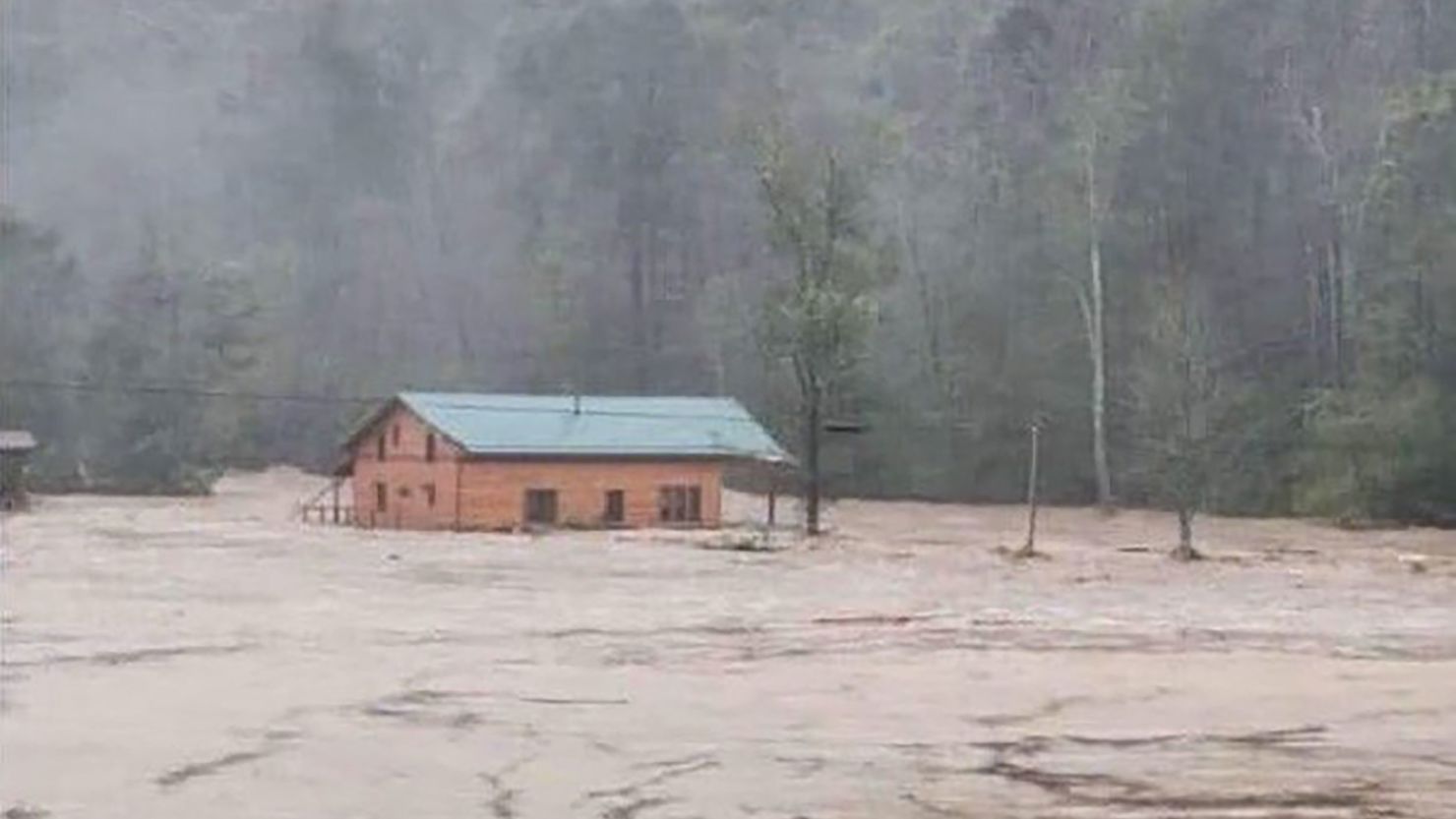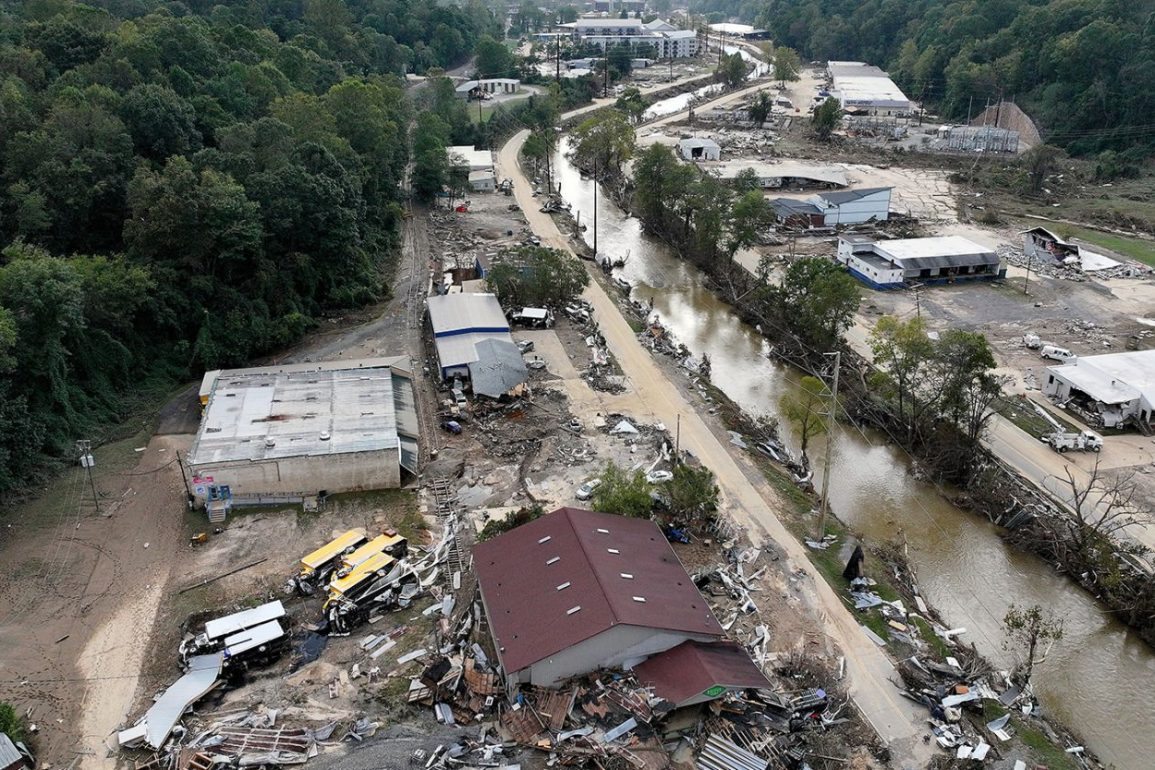Hurricane Helene, a Category 4 storm, devastated parts of the southeastern U.S., with its destruction reaching as far inland as the southern Appalachian Mountains. Kim and Rod Ashby were at their second home in Elk Park, North Carolina when the disaster struck. Despite feeling safe due to their elevated home near the Tennessee state line, the couple found themselves in the midst of catastrophe when flooding from the nearby Elk River swept their home away. Rod managed to survive, clinging to debris, but Kim has been missing since the incident.
The storm caused significant destruction across the region. By the time Helene reached North Carolina, it had already claimed over 140 lives, with at least 231 deaths recorded across six states. Millions were left without power, particularly in Georgia and the Carolinas. President Joe Biden approved federal disaster declarations for several states and deployed thousands of troops and federal personnel to assist in recovery efforts.
Helene’s impact on North Carolina was worsened by pre-existing conditions. The ground was already saturated from a previous storm system, leading to severe flooding and landslides, especially in the mountainous regions. Days before the storm’s landfall, meteorologists had warned that western North Carolina could experience one of the most severe weather events in its history. Despite these warnings, the scale of destruction left entire communities unrecognizable.

In Asheville, North Carolina, the storm turned the city into a “catch basin” for the heavy rains, causing catastrophic flooding. The city’s position between two major rivers made it particularly vulnerable. The storm killed at least 72 people in Asheville’s Buncombe County, and many more are missing or stranded. The stench of death lingers over the region, reminiscent of the aftermath of Hurricane Katrina, as search and rescue teams struggle to navigate the damage.
Rescue operations are ongoing, but the destruction has made it difficult to reach certain areas. In Chimney Rock, another mountain village, every building was either destroyed or severely damaged. Some areas are only accessible by helicopter, and locals have resorted to using pack mules to deliver essential supplies. The scope of the destruction has left smaller communities particularly vulnerable, as efforts have been largely focused on more well-known areas like Asheville.
In some areas, the damage has been so extensive that entire neighborhoods have been wiped out. Chimney Rock, for instance, saw no building spared from the floodwaters. Authorities and rescue teams are now shifting from immediate search and rescue operations to longer-term recovery efforts, carefully sifting through debris in the hope of finding survivors or recovering the remains of the missing.
The exact number of people missing remains unclear, as the storm’s destruction spans many isolated communities across western North Carolina. Many of these areas are in remote valleys and mountainous terrain, complicating rescue efforts. FEMA and local officials are working to get an accurate count, but there are fears that some communities may have been entirely cut off or lost to the storm.
In Maggie Valley, a resort town, many residents are grappling with the psychological toll of the disaster. Joseph Franklin McElroy, a local resident, explained how his young children were treating the situation like an adventure, unaware that their beloved teacher had drowned in the storm. McElroy also expressed frustration with the breakdown in communication between local authorities and residents, leaving many unsure whether their loved ones were safe.
Meanwhile, Kim Ashby’s family continues to hold onto hope. Rod survived the flood but has been devastated by his wife’s disappearance. Search teams, including helicopters and drones, have been unable to locate her. Kim, a breast cancer survivor, is described as a fighter by her family, who believe that if she makes it out of the river, she is still alive. The community continues to search, driven by that hope.
As recovery efforts continue, the scale of Helene’s destruction remains overwhelming. Entire communities have been wiped out, and many people are still unaccounted for. The recovery process will be long and arduous, with rescuers and residents alike struggling to come to terms with the devastation and loss of life caused by one of the deadliest hurricanes in recent U.S. history.

